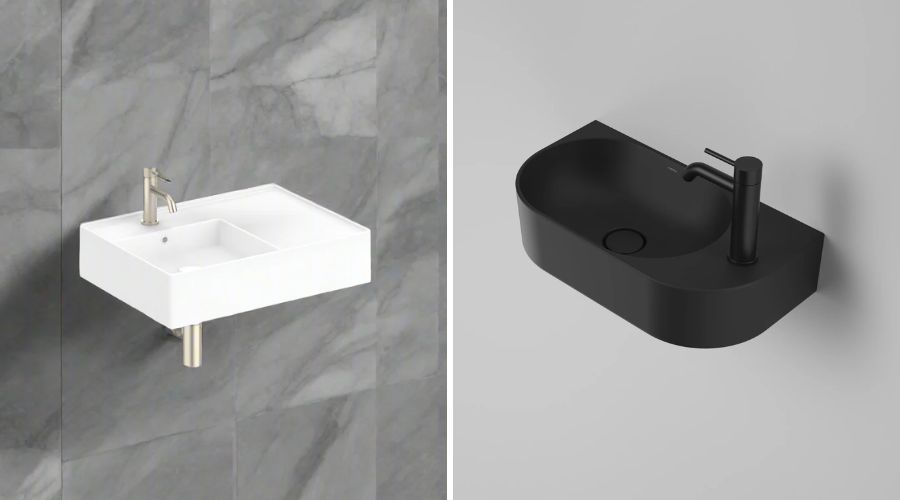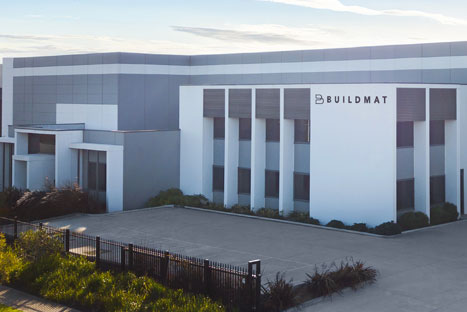Wall Hung Basins for Bathrooms: Pros & Cons
Wall hung basins bring minimalist lines and space-saving appeal, but they aren't a fit for every home. Before you buy, here’s what to weigh up.

Wall hung basins have become a popular choice for bathrooms of all sizes. These basins create a floating, open look that can instantly modernise a space. But while they score points for aesthetics, they also come with a few extra considerations when it comes to installation, wall support and storage planning.
Whether you're upgrading a powder room or designing a new ensuite from scratch, understanding the pros and cons of wall mounted basins will help you make the right choice, not just for looks, but for how your bathroom actually functions day to day.
What is a Wall Hung Basin?
A wall hung basin is mounted directly onto the wall without a vanity or pedestal underneath. The plumbing is typically concealed inside the wall, and the basin appears to “float” above the floor. This creates a more open look, especially in smaller rooms where floor space is limited.
Wall basins come in a range of sizes and finishes, from ultra-compact hand basins for powder rooms to wider, sculptural basins with built-in shelf space for daily use. You’ll find options with tap landings for above-sink mixers and clean, hole-free options designed for wall mixer taps.
The Benefits of Wall Hung Basins
1. They Open Up Your Floor Space
One of the biggest advantages of wall mounted basins is the feeling of space they create. By lifting the basin off the floor, you instantly remove visual bulk and allow more light to travel through the room. In smaller bathrooms, this makes the room feel less cramped and more open, even when the overall dimensions haven’t changed.
This is particularly effective when paired with light-coloured bathroom tiles, wall-to-wall mirrors or frameless glass showers. The visual trickery makes your bathroom feel larger and cleaner, and gives the whole space a more considered, architectural edge.
2. Easier to Clean Around
Because there’s no base, cabinetry or plinth under the basin, cleaning the area around and beneath it is fast and hassle-free. There are no kickboards or floor joins to collect hair, dust or water. If you’re someone who appreciates quick daily wipe-downs or likes their bathroom feeling low maintenance, this can make a difference in everyday use.
3. Offers Flexibility in Height
Unlike traditional vanities, which come at a fixed standard height, wall hung basins give you the freedom to mount at a height that suits your household. This is particularly useful in powder rooms for kids, accessible bathrooms that need to meet specific requirements, or tall users who prefer a slightly higher basin for comfort.
Just keep in mind, once you’ve installed and tiled the wall, changing that height isn’t easy. So it’s important to get it right the first time with accurate measurements and clear planning.
4. A Cleaner, More Modern Aesthetic
Wall mounted basins immediately bring a cleaner, more minimal look to your space. They work beautifully in bathrooms styled with matte tapware, soft-toned tiles, or custom joinery. The floating design complements modern materials and is versatile enough to suit both monochrome and colour-rich schemes.
The Drawbacks
1. Wall Support Is Essential
A wall hung basin needs to be anchored securely into a reinforced wall. This means your builder will likely need to install a timber noggin or steel bracket system between studs during the rough-in stage. If your bathroom is already built and tiled, retrofitting a wall basin can be complicated, and sometimes not possible without removing wall linings.
This is especially important if you're choosing a heavy ceramic model or wide format style. Don’t rely on plasterboard alone to hold the weight. Check weight ratings, bracket types, and get your installer to confirm it’s safe and solid.
2. No Built-In Storage
The flip side of that clean, minimal look? You won’t have any drawers or shelves below. Wall hung basins don't offer storage, which can be an issue in family bathrooms or apartments with limited cabinetry.
To compensate, think about what else is going in the room, wall-mounted shaving cabinets, mirrored storage, open shelving or custom joinery nearby can all help keep things functional without losing the floating effect.
3. More Complex Installation
Installing a wall hung basin is more involved than dropping one into a vanity top. You’ll need a plumber to connect the waste and tapware inside the wall cavity, a builder to reinforce the wall, and possibly a tiler to finish around the brackets. All of this means longer lead times and higher labour costs.
If you're doing a full bathroom reno, it’s easy to factor in. If you’re simply replacing a basin on a budget, a wall mount may not be worth the extra work.
What to Consider When Choosing One
- Tapware setup: Will you be using wall mounted taps? Or do you need a basin with a built-in tap landing? Many models offer both.
- Space: Is the basin in a powder room or the main bathroom? Do you need room for toothbrushes, soap or other essentials?
- Finish: Gloss white is classic, but matte basins in green, pink, clay or speckled tones can make your basin feel like a design feature and not just a fixture.
- Size: Small basins are ideal for guest toilets, while wider styles suit larger bathrooms.
Shop Buildmat’s Wall Hung Basins
Wall hung basins are a smart, space-savvy choice that delivers serious design impact, but they work best when they’re properly planned. If you’re looking for a more open layout, easier cleaning and a clean, modern feel, wall hung makes sense. Just be ready to work with your builder or plumber early on, and think through the trade-offs on storage and install complexity.
Need more help choosing? Check out Buildmat's renovator guide to the best bathroom basins.






















































































































































































































